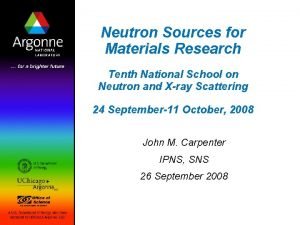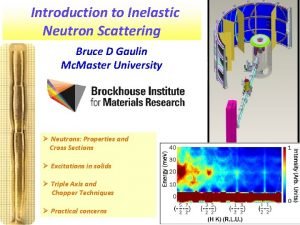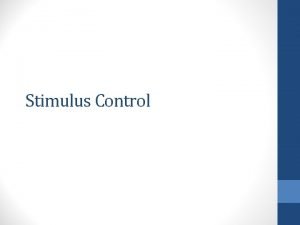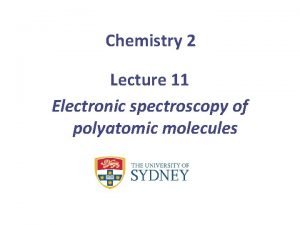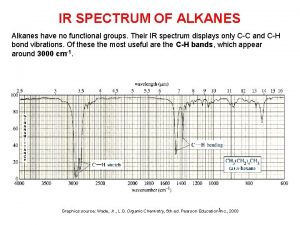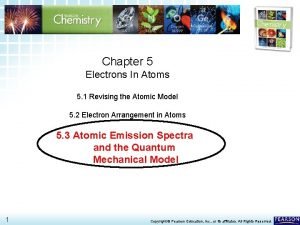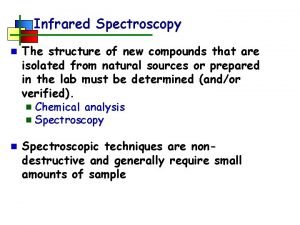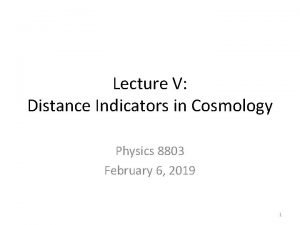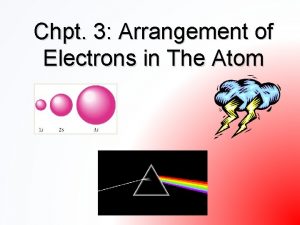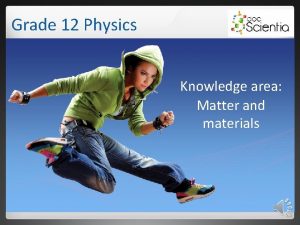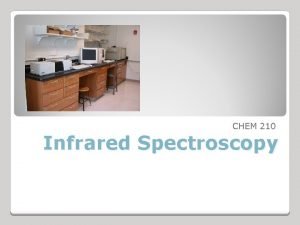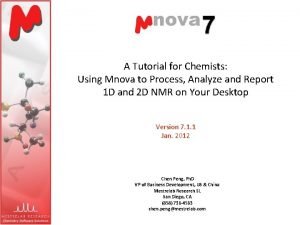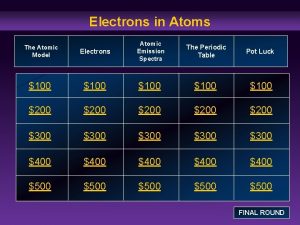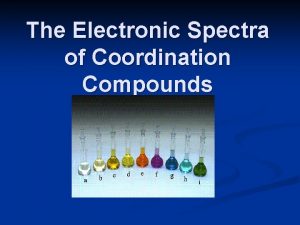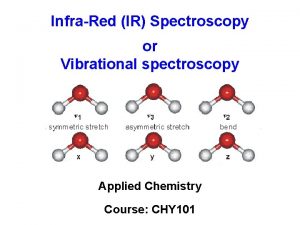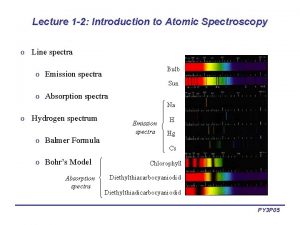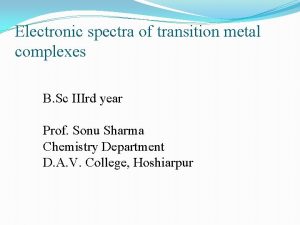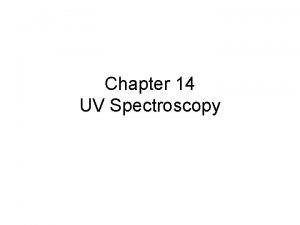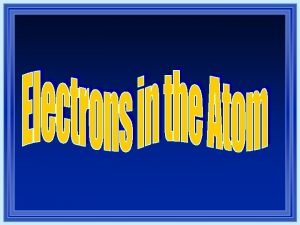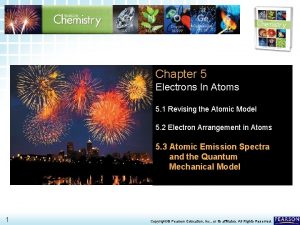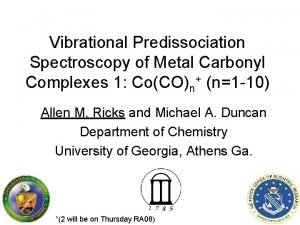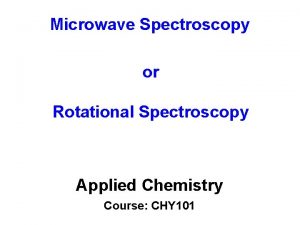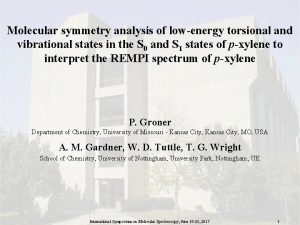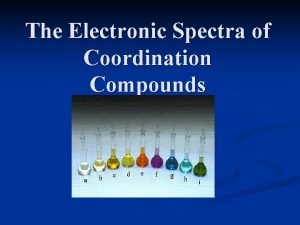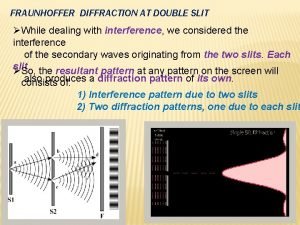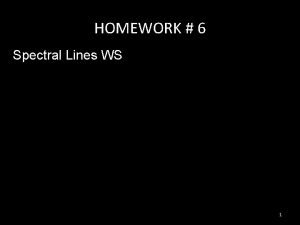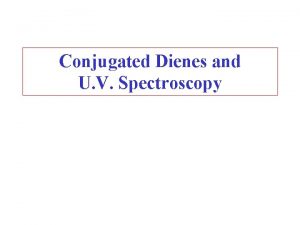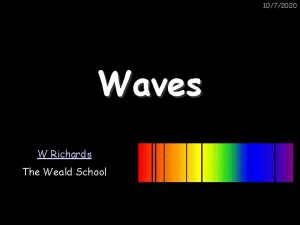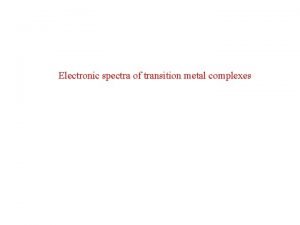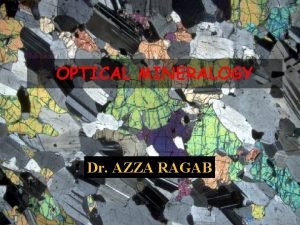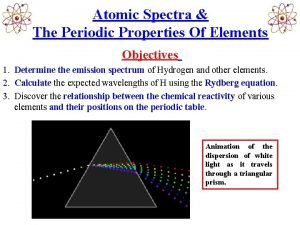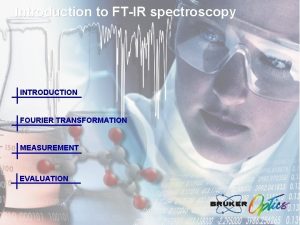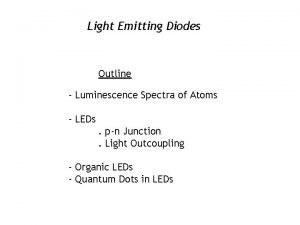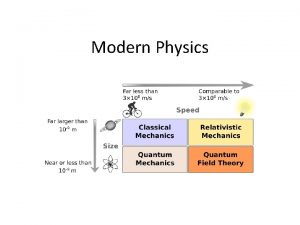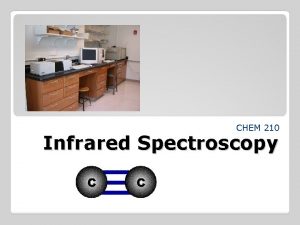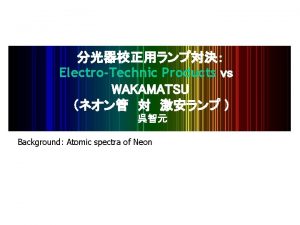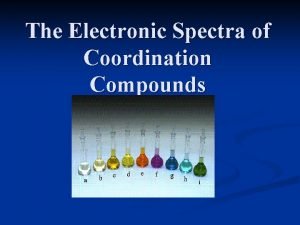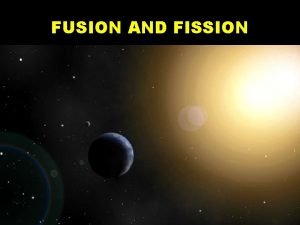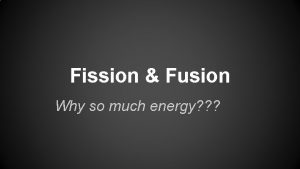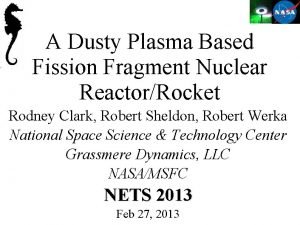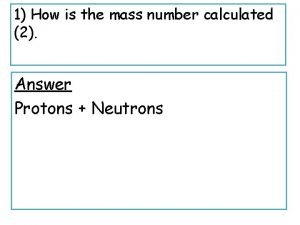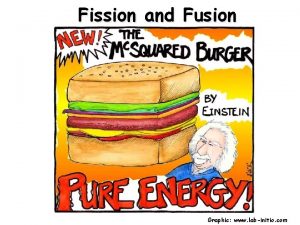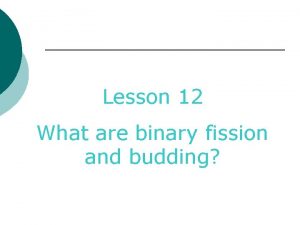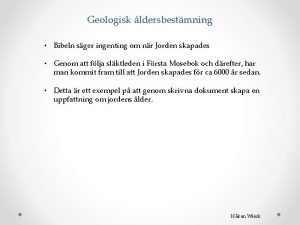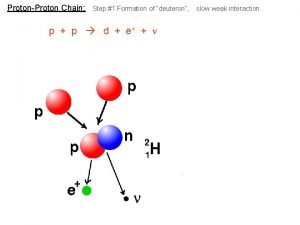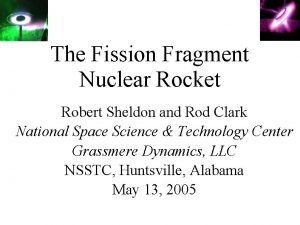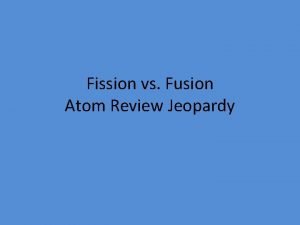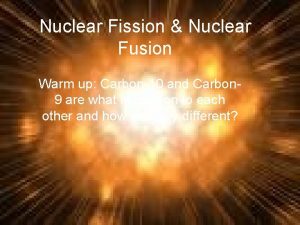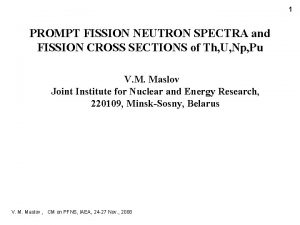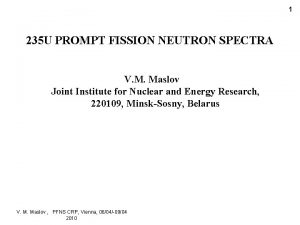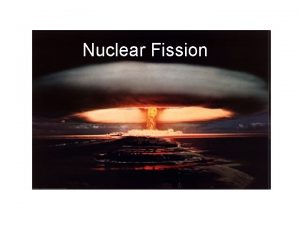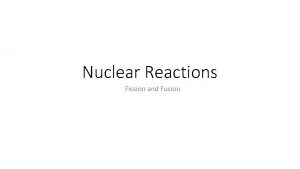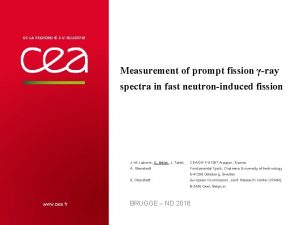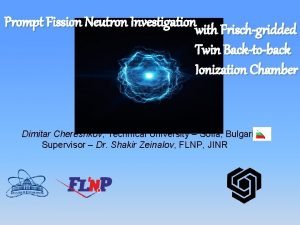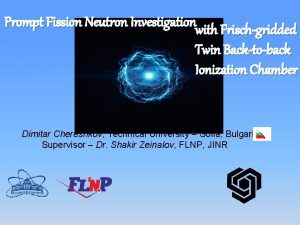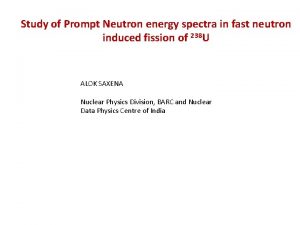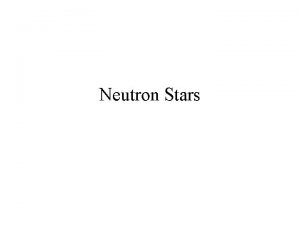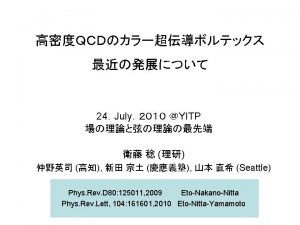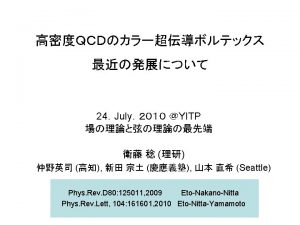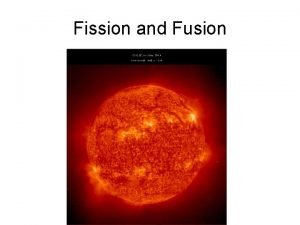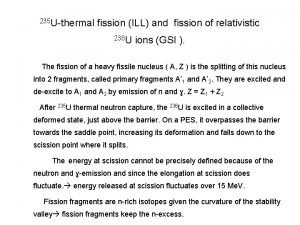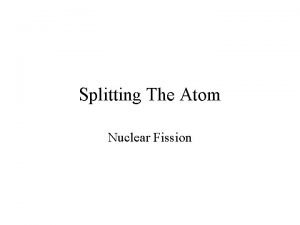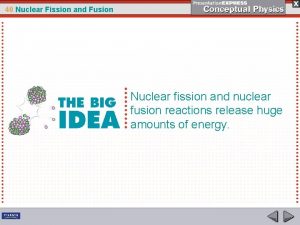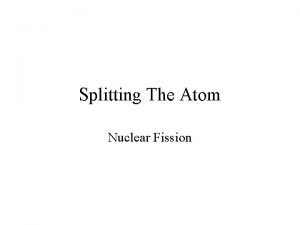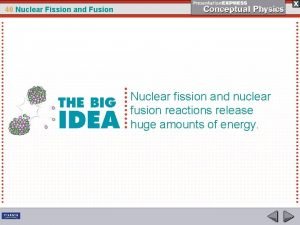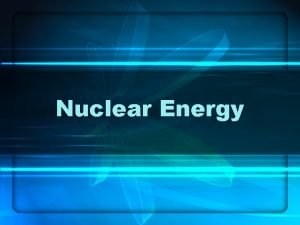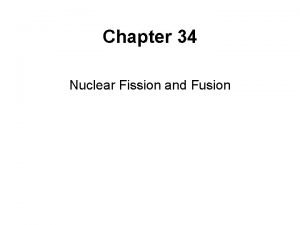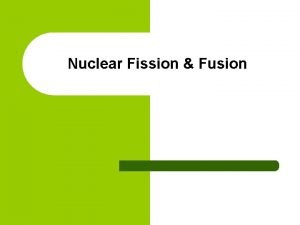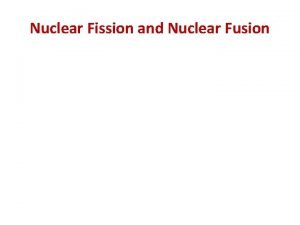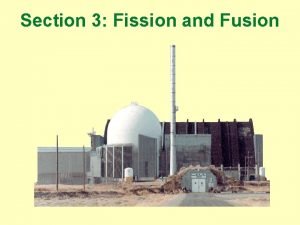IAEAND CM on Prompt fission neutron spectra of




![Multimodal Random Neck-rupture Model Multichannel Fission Model [U. Brosa, S. Grossmann, A. Müller] Multimodal Random Neck-rupture Model Multichannel Fission Model [U. Brosa, S. Grossmann, A. Müller]](https://slidetodoc.com/presentation_image_h/0fd7d9136a6bfd71cd8095769a1322b5/image-5.jpg)


















































- Slides: 55

IAEA-ND CM on “Prompt fission neutron spectra of major actinides”, 24 -27. Nov. 2008 Application of Multimodal Madland-Nix Model ・Evaluation of PFNS in JENDL-series ・Multimodal Random Neck-rupture Model : An Outline ・Refinements in the Madland-Nix Model 1) Multimodal fission, 2) Level density parameter considering the shell effect, 3) Asymmetry in ν for LF and HF, 4) Asymmetry in T for LF and HF ・Possible early neutrons:Neutron emission during acceleration ( NEDA) Takaaki Ohsawa (大澤孝明) Dept. of Electric & Electronic Engineering School of Science and Engineering Kinki University, Osaka, Japan

Prompt fission neuron spectra in JENDL-3. 3 and JENDL/AC 2008 Th-232 Pa-231 U-233 U-235 JENDL-3. 3 Maxwellian [TM=Howerton-Doyas’ syst. ] Maxwellian (taken from ENDF/B-V) Multimodal M-N (T. Ohsawa) U-238 Multimodal M-N [E≤ 5 Me. V], Preeq. spectrum by FKK model Multimodal M-N Np-237 Pu-239 Maxwellian [TM: Baba(2000), Boikov(1994)] Multimodal M-N Pu-241 Am-241 Maxwellian [TM=Smith’s systematics] Maslov’s evaluation (1996) Am-242 m Maslov’s evaluation (1997) Cm-243 Maslov’s evaluation (1995) Cm-245 Maslov’s evaluation (1996) JENDL/AC 2008 CCONE (O. Iwamoto) CCONE Multimodal M-N [E≤ 5 Me. V], CCONE [E>5 Me. V] CCONE Multimodal M-N [E≤ 5 Me. V] CCONE [E>5 Me. V] Multimodal M-N [E≤ 6 Me. V], CCONE [E>6 Me. V] Multimodal M-N [E≤ 6 Me. V], CCONE[E>6 Me. V]

Evaluated Nuclear Data for Actinides in the JENDL-series JENDL-3. 3 JENDL/AC 2008 ・Released May 2002 ・ 62 nuclides ・Released March 2008 ・Ac –Fm (Z=89 -100) ・ 79 nuclides New 17 nuclides (T 1/2 >1 d) added JENDL-4 ・Will be released in 2010 ・Slight revision(? )

Program CCONE (by O. Iwamoto, JAEA) Main features ・”All-in-one” code for evaluation of nuclear data ・Witten in C++ for ease of extension & modification ・Architecture based on object oriented programming ・Coupled-channel theory ・Hauser-Feshbach theory including Moldauer effect ・DWBA for direct excitation of vibrational states ・Two-component exciton model (Kalbach) ・Multi-particle emission from the CN with spin- and parity-conservation ・Double-humped fission barriers with consideration of collective enhancement of the level density ・Madland-Nix model (original implementation) cf. Osamu Iwamoto, J. Nucl. Sci. Technol. 44, 687 (2007)
![Multimodal Random Neckrupture Model Multichannel Fission Model U Brosa S Grossmann A Müller Multimodal Random Neck-rupture Model Multichannel Fission Model [U. Brosa, S. Grossmann, A. Müller]](https://slidetodoc.com/presentation_image_h/0fd7d9136a6bfd71cd8095769a1322b5/image-5.jpg)
Multimodal Random Neck-rupture Model Multichannel Fission Model [U. Brosa, S. Grossmann, A. Müller] Random Neck. Rupture Model [e. g. E. K. Hulet et al. 1989] [S. L. Whetstone, 1959] “hybrid” Multimodal Random Neck-Rupture Model (BGM model)

Multimodal Random Neck-rupture Model Several distinct deformation paths ⇒ several pre-scission shapes S 1 Neck-rupture occurs randomly according to the Gaussian function S 2 SL [U. Brosa et al. 1990]

Example: 235 U(n, f) Mass Yield [H. -H. Knitter et al. Z. Naturforsch, 42 a, 760(1987)] Standard-2 Standard-1 Superlong TKE Standard-1 Standard-2 Superlong σ (TKE) 3 modes overlapping → largest σ 2 modes overlapping → larger σ single mode prevails → smaller σ

Justification of the MM-RNR model on the basis of deformation energy surface calc. [B. D. Wilkins et al. , Phys. Rev. C 14, 1832 (1976)] Beta-deformation N=86 (Meta-stable deformation; S 2) Spherical nucleus N N=82 (S 1) Z Z=50 (S 1) The nascent HF is likely to be formed close to these hollows

Application of the Multimodal RNR Model Multi-channel Fission. Model Madland-Nix (LA) Model Random Neck. Rupture Model Multimodal RNR Model Multimodal Madland-Nix Model T. Ohsawa et al. , Nucl. Phys. A 653, 17 (1999). Summation Calculation Multimodal Analysis of DNY T. Ohsawa & F. -J. Hambsch, Nucl. Sci. Eng. 148, 50 (2004)

Fluctuations Observed in the Fission Yield in the Resonance Region for U-235 [F. -J. Hambsch] Precursors are localized, because they have a structure of closed shell + loosely bound neutrons outside of the core.

Fluctuation in the Precursor Yields in the Resonance Region of U-235 The precursor yields in the LF-S 2 -region are considerably decreased. This brings about decrease in the delayed neutron yield at the resonance.

Fluctuation in the Delayed Neutron Yields for U-235 -3. 5% cf. T. Ohsawa and F. -J. Hambsch, Nucl. Sci. Eng. 148, 50 (2004)

Slight decrease in thermal & resonance regions Sudden decrease in the 4 - 7 Me. V region

Models of PFNS 1. Maxwellian 2. Watt 3. Madland-Nix (LA) model CM-spectrum: S. S. Kapoor et al. , Phys. Rev. 131, 283 (1963)

LS-spectrum: 4. Cascade Evaporation Model Märten & Seeliger Hu Jimin 5. Hauser-Feshbach Model Browne & Dietrich Gerasimenko Criteria for choosing a model for evaluation: 1. Accuracy 2. Simplicity 3. Predictive power 6. Monte Carlo Simulation Dostrovsky, Fraenkel (1959) Lemaire, Talou, Kawano, Chadwick, Madland

Improvements in the Method (1) Multimodal Fission: Energy partition in the fission process is very different for different fission modes (3) Asymmetry inν: νL≠νH Original Madland-Nix Model χtot= ½{ χL+ χH } (2) LDP : Shell effects on the LDP (Ignatyuk’s model) (4) Asymmetry in T : T L ≠ TH because of the difference in deformation Multimodal Madland-Nix Model

(1) Multimodal Fission Model Each different deformation path leads to different scission configuration, therefore to different energy partition. ion s s i on i ic f ode) r s t e fis de) m m c d i tr mo ym ar e As tand mm rlong (s y S pe ( su S 1 S 2 SL Hartree-Fock-Bogoliubov calc. by H. Goutte et al. , Phys. Rev. C 71, 024316(2005)

Standard-1 Multimodal Fission Process 235 U(n, f), Ein=thermal 102 % 3 8. 1 81. 6% 236 0. 00 7% ER=194. 5 Me. V TKE=187 Me. V Standard-2 95 141 ER=184. 9 Me. V TKE=167 Me. V Superlong 118 ER : calc. with TUYY mass formula (Tachibana et al. , Atomic & Nucl. Data Tables, 39, 251 (1988) ) TKE : Knitter et al. , Naturforsch, 42 a, 786 (1987) 134 118 ER=190. 9 Me. V TKE=157 Me. V Average fragment mass

Decomposition of Primary FF Mass Distribution <TXE>= 24. 4 Me. V 40. 5 Me. V 14. 0 Me. V 24. 4 Me. V

S 1 -spectrum – softest S 2 -spectrum – harder SL-spectrum -hardest

Comparison with experiment for U-235(nth, f) ●Modal spectrum : ●Total spectrum : wi : mode branching ratio This evaluation is contained in JENDL-3. 3 & JENDL/AC 2008 and will also be in JENDL-4.

At higher incident energies the spectrum becomes harder due to 1. Higher excitation energies of the FFs. 2. Increase in the S 2 component.

(2) Shell Effects on LDP for FF

Ignatyuk’s LDP ●Shell effects on the LDP vary according to the mass and excitation energy of the FFs. (1) Asymptotic value : Effective excitation energy : Excitation-energy dependence : Shell correction : Eq. (1) is a transcendental eq. →Solve it numerically! (IGNA 3 code)

Effect of the Level Density Parameter on the Spectrum LDP has a great effect on the spectrum, esp. in the higher energy region.

(3) Asymmetry in ν for LF and HF: νL(A) ≠ νH(A) Saw-tooth structure

Madland. Nix: New modal spectra: This is important because the neutron spectra from the LF and HF are very different!

m. Hv. H=m. Lv. L CM HF LS LF 1. The LF travels faster than the HF. Two effects 2. Low energy neutrons are more easily emitted from HFs than from LFs. HF S. S. Kapoor et al. , Phys. Rev. 131, 283 (1963) LF

Consideration of non-equality νL(A) ≠ νH(A) brings about a difference of ~10% at maximum in the spectrum

(4) Asymmetry in the Nuclear Temperatures ・T. Ohsawa, INDC(NDS)-251 (1991), IAEA/CM on Nuclear Data for Neutron Emission in the Fission Process, Vienna, 1990. p. 71. ・T. Ohsawa and T. Shibata, Proc. Int. Conf. on Nucl. Data for Science and Technology, Juelich, 1991, p. 965 (1992), Springer-Verlag. ・P. Talou, ND 2007, Nice (2008) ●Total excitation energy of the FF: TXE = Eint (L) + Edef (L) + Eint (H) + Edef (H) at the scission-point = E*(L) + E*(H) at the moment of neutron emission The nuclear temperatures of the two FFs at the moment of neutron emission are generally not equal, if the deformation is different at scission.

E*CN=Bn+En E*L= Eint L +Edef L E*L=a. LT 2 L E*H=a. HT 2 H E*H= Eint H +Edef H TXE =<ER> + Bn + En ー TKE = a. CNT 2 m = a. LT 2 L + a. HT 2 H =(a. LRT 2 + a. H)T 2 H where RT=TL/TH : temperature ratio

Basic Fission Data for U-235(nth, f) Standard-1 Standard-2 Superlong Mode Nuclides ER Zr-102 Te-134 Sr-95 Xe-141 Pd-118 194. 49 187 TKE 184. 86 190. 95 167 157 E* 8. 39 10. 51 11. 74 9. 11 22. 89 LDP 11. 43 8. 89 10. 31 13. 25 11. 79 1. 05 1. 31 1. 47 1. 14 2. 86 TL, i, TH, i 1. 39 0. 86 1. 09 1. 06 0. 83 1. 39


Possible Early Neutrons

Neutron Emission During Acceleration (NEDA) ・Certain fraction of prompt neutrons may be emitted before full acceleration of FF [V. P. Eismont, 1965] t = time after scission x = E/Ek : ratio of the FF-KE relative to its final value Ek s 0 = charge-center distance vk = final velocity=[2{(M-m)Mm}・ 1. 44(Z-z)z/s 0]1/2 t z, m s 0 Z, M

Time Scale of Neutron Emission Neutron emission time from an excited nucleus of excitation energy U and binding energy Bn [T. Ericson, Advances in Nuclear Physics 6, 425 (1960)] If n-emission time > acceleration time t → NE after full acceleration < t → NE during acceleration

NEDA is possible, at least in the Standard-2 fission

Empirical Examination Parametric survey ● Define two parameters: ・NEDA factor : fraction of neutrons emitted during acceleration ・Timing factor TF : the ratio E/Ek at which neutrons are emitted ● Then find the best set of parameters that reproduce the experimental data.

Results of parameter search: Best fit set of values that reproduce the experimental data for Cm-245(nth, f) is NEDA=0. 3, TF=0. 7

NEDA factor increases with excitation energy

Concluding Remarks 1. Madland-Nix model, refined by considering 1) multimodal nature of the fission process 2) appropriate LDP with inclusion of the shell effect 3) asymmetry in ν for LF & HF 4) asymmetry in T for LF & HF provides a good representation of the spectra for major actinides in the first chance fission region where multimodal analyses have been done. 2. In order to further improve the accuracy and extend the predictive power of the method, it is necessary to have a better knowledge on the systematics of the multimodal parameters for more fissioning systems. 3. Mode detailed study should be undertaken in order to solve the pre-scission/scission neutrons or neutron emission during acceleration.





Justification of the Triangular Temperature Distribution with Sharp Cutoff The approximate validity of this model is based on a specific relationship between the FF neutron separation energy and the width of the initial distribution of FF excitation energy. [Terrell; Kapoor et al. ]

Mis-alined Fission and Fusion Valleys Mis-alined Valleys [W. J. S. Swiatecki & S. Bjornholm, Phys. Rep. 4 C, 325 (1972) ] ・Fission and fusion valleys are separated by a ridge. ・The nucleus gets over the ridge somewhere from the fission to fusion valley. Hartree-Fock. Bogoliubov calc. [J. F. Bernard, M. Girod, D. Gogny, Comp. Phys. Comm. 63, 365 (1991)] Scission occurs somewhere around here.

Pre-scission shapes S 1 Average number of neutrons emitted from a fragment for each mode S 2 SL Partition of the TXE T. -S. Fan et al. , Nucl. Phys. A 591, 161 (1995)

The inverse reaction cross sections for HFs are higher than those for LFs in the low energy region. (according to the optical model calc. ) LS-spectrum: Gauss-Legendre quadrature over ε and T Gauss-Laguerre quadrature

NEDA increases with excitation energy General systematic relations : ER = 0. 2197(Z 2/A 1/3)- 114. 37 TKEViola = 0. 1189(Z 2/A 1/3) + 7. 3 TXE = ER -TKE + Bn + En = 0. 1008(Z 2/A 1/3) - 121. 67 +Bn + En As Z 2/A 1/3 increases, TXE increases, which, in turn, means more NEDA effects for heavier actinides.

Five-Gaussian Representation of Fragment Mass Distribution by Wang & Hu Y (A, Af , Ef*) = CS 1[G(A, AS 1, µS 1 s) + G(A, Af -AS 1, µS 1 s)] + CS 2[G(A, AS 2, s) + G(A, Af -AS 2, s)] + CSLG(A, Af /2, µSLs) Parameters : CS 1 = 59. 3 - 0. 263 Nf - 0. 017(Af -235. 7) Ef*, CS 2 = 2. 66(169. 9 - Nf) + 0. 19(Af - 232. 6) Ef*, CSL = 0. 01 exp(0. 46 Ef*), AS 1 = 82. 3 + 0. 293 Nf + 0. 1 Zf - 0. 03 Ef*, AS 2 = 141. 0 - 0. 053 Ef* , s = 5. 7 - 0. 24(149. 9 - Nf ) + 0. 12 Ef*, µSL = 1. 4, µS 1 = 1. 884 -0. 0094 Nf + 0. 267 exp[-(Nf -142. 5)2] + 0. 114 exp[-|Nf -146. 8|], C = 100/( CS 1 + CS 2 + CSL/2 )

Decomposition of Fission Fragment Mass Distribution N=50 TXE= 31. 5 Me. V 29. 1 Me. V Z=50 N=82 54. 6 Me. V


Location of Delayed Neutron Precursors (Heavy Fragment Region) Z=50 N=82

At higher energies, successive neutron emission from “would-be” precursors (primary FFs) leads to loss of actual precursors T. Ohsawa et al. , Proc. Int. Conf. on Nucl. Data for Sci. & Eng. , Nice, France (2007)
 Neutron fission
Neutron fission Eneutron krok 2
Eneutron krok 2 Response prompt vs stimulus prompt
Response prompt vs stimulus prompt Response prompt vs stimulus prompt
Response prompt vs stimulus prompt Electronic spectra of polyatomic molecules
Electronic spectra of polyatomic molecules Thomson higher education
Thomson higher education Atomic emmision spectrum
Atomic emmision spectrum Spectra shropshire
Spectra shropshire Ir spectra chart
Ir spectra chart Supernova spectra
Supernova spectra Emission line spectra
Emission line spectra Matter and materials grade 12
Matter and materials grade 12 C triple bond n ir spectra
C triple bond n ir spectra Mnova stacked spectra
Mnova stacked spectra Electromagnetic series
Electromagnetic series Ir value chart
Ir value chart Atomic emission spectra periodic table
Atomic emission spectra periodic table Microstate table for p2
Microstate table for p2 Ethyl acetate ir
Ethyl acetate ir Introduction to atomic spectra
Introduction to atomic spectra Electronic spectra of transition metal complexes
Electronic spectra of transition metal complexes Conjugation in spectroscopy
Conjugation in spectroscopy Why are atomic emission spectra discontinuous
Why are atomic emission spectra discontinuous Atomic emission spectra and the quantum mechanical model
Atomic emission spectra and the quantum mechanical model Iron carbonyl fe co 5 is
Iron carbonyl fe co 5 is Microwave spectroscopy
Microwave spectroscopy Vibronic spectra
Vibronic spectra Electronic spectra of coordination compounds
Electronic spectra of coordination compounds Fraunhoffer diffraction
Fraunhoffer diffraction The diagram shows the characteristic spectral line
The diagram shows the characteristic spectral line Uv spectra of dienes
Uv spectra of dienes Weald to waves
Weald to waves Racah parameter and nephelauxetic effect
Racah parameter and nephelauxetic effect Azza spectra
Azza spectra Periodic table of spectra
Periodic table of spectra Spectra tips
Spectra tips Ftir spectra
Ftir spectra Led luminescence
Led luminescence Line spectra
Line spectra Nitro group ir peak
Nitro group ir peak Electro-technic products
Electro-technic products Correlation diagram in coordination chemistry
Correlation diagram in coordination chemistry Is the sun fusion or fission
Is the sun fusion or fission Fusion or fission
Fusion or fission Examples of asexual reproduction
Examples of asexual reproduction Nuclear fission equation
Nuclear fission equation Dusty plasma radiator
Dusty plasma radiator How is mass number calculated
How is mass number calculated Fission equation
Fission equation Fission vs budding
Fission vs budding Fission track dating
Fission track dating The disadvantages of sexual reproduction
The disadvantages of sexual reproduction Proton proton chain
Proton proton chain Fission fragment rocket
Fission fragment rocket Fusion vs fission
Fusion vs fission Are nuclear power plants fission or fusion
Are nuclear power plants fission or fusion
